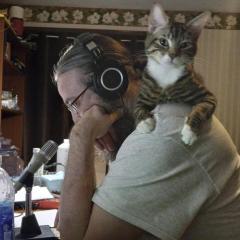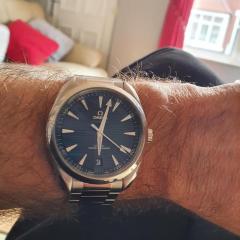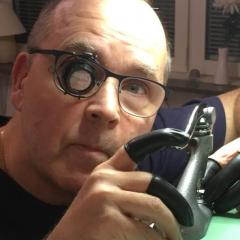D. I. Y. Watch Timing Machine.
-
Similar Content
-
Recently Browsing
- No registered users viewing this page.
-
Topics
-
Posts
-
You shared this test with me a few months back on a Hamilton project and so I had checked this watch to find the pins were still equally spaced. Their screw slots were undamaged and very tight hard to move so maybe no one has messed with them before. I can't work on it much today but I did measure the fork slot again and it seems like 0.44 is the right size. I measure the jewel that had been installed at just 0.42. would an undersized too narrow impulse jewel impact the impulse drastically? I ask because I have had it at a state where flipping the fork manually with a tool would unlock some of the time, but the balance was never capable of unlocking.
-
By HectorLooi · Posted
This was what I was afraid of. The movement is not one of the generic black square modules. Remove the movement from the clock and try prying it open very carefully, without breaking the plastic tabs. The plastic might be brittle from age. Clean the wheels and check the battery contacts for corrosion. Check the PCB for bad solder joints. Take plenty of photos along the way. -
One of the problems with trying to Photograph Phils things are that his enjoyment was building these things so they tended to E falls on what will see if I can find some earlier pictures or any pictures I wasn't even sure because I was looking for that specific picture for somebody else and even it got the last version and that would have been the last version. You will note that he put the indexing on something that he could unscrew it or whatever and it can slide back out of the way so the rest of the lathe can be used as a lathe. With the lathe cut are actually coming down from the top I was there once where he demonstrated how to cut a pivot with the setup it was really beautiful. Older set up if I remember it's not a worm gear assembly in the thing in between the stepping motor and the holding block I believe this particular one was like a 100 to 1 gear ratio. Earlier version with watchmaker's lathe. Even looks like he is the watchmakers bed and then switch to something he made. Then I do have other pictures and things of the rotary stage in use. In the raw so if you tube videos here is an example of one were somebody's mounting a three jaw chuck. At one time there were available on eBay they were not cheap but if you're patient like I was I found one cheap on eBay. After you watch the video it look at his other videos he is a whole bunch of other examples of the same rotary stage. That I do know there are other pictures examples and possibly videos you just have to track them down. One of the minor issues of finding this particular tech sheet for the unit is I believe it was a custom manufacturer and the company change their name but I remember the new name here's a link to the company https://www.ondrivesus.com/rino-mechanical-components
-
Escapement adjusting always interesting and depending upon the reference always confusing. Okay maybe it's not always confusing but it does lead to confusion. I have a PDF below it's actually a whole bunch of separate stuff including a hand out that came from a lecture that's on you tube. Then from that we get this image Consequences of doing things especially if you do things out of order or you do things for the wrong reason. Oh and even if the watches working I made the mistake one so showing my boss how tweaking the banking pins on a full plate on the timing machine made the amplitude get better and now he thinks that's what they're for and I don't think a fully grasped exactly what horn clearance means. Consequence of doing things. Notice what it says about opening and closing the banking pins and total lock? So yes I've had that on a full plate where it won't unlock at all and that's the banking pins or a combination of things basically. So banking pins unfortunately get moved. One of the ways to tell if it's been moved is the look straight down at the end of the fork with the balance wheel removed. Power on the fork push at the one side look at it push it to the other side also look at it and compare anything with the center reference the balance jewel and see if both sides of the same. No guarantee after the same there in the right place but at least are the same typically when people play with things one side will be way off from the other because they had no idea what they were doing at all because of course it's a full plate and you really have to paying attention and even then there's still hard to do. Then the other thing that comes up like it shows below is people often adjust the banking pins to do all those other things as opposed to horn clearance which is all that it's therefore and maybe bonus Guard pin clearance although you're supposed to deal with the guard pin is a separate thing like single roller gets bent in Or out or sometimes physically gets moved in and out. Some full plates older escapement's typically pallet forks held together with screws and you can actually unscrew and move the entire assembly in Or out more complications to deal with. Escapement handout wostep nscc.pdf
-
If he was much younger and some sort of sports player it wouldn't be a problem. They would be in there and doing surgery and he'd be back on the field in no time. Unfortunately when you get older little things are bad and big things can be really bad so not good at all.
-







Recommended Posts
Join the conversation
You can post now and register later. If you have an account, sign in now to post with your account.
Note: Your post will require moderator approval before it will be visible.